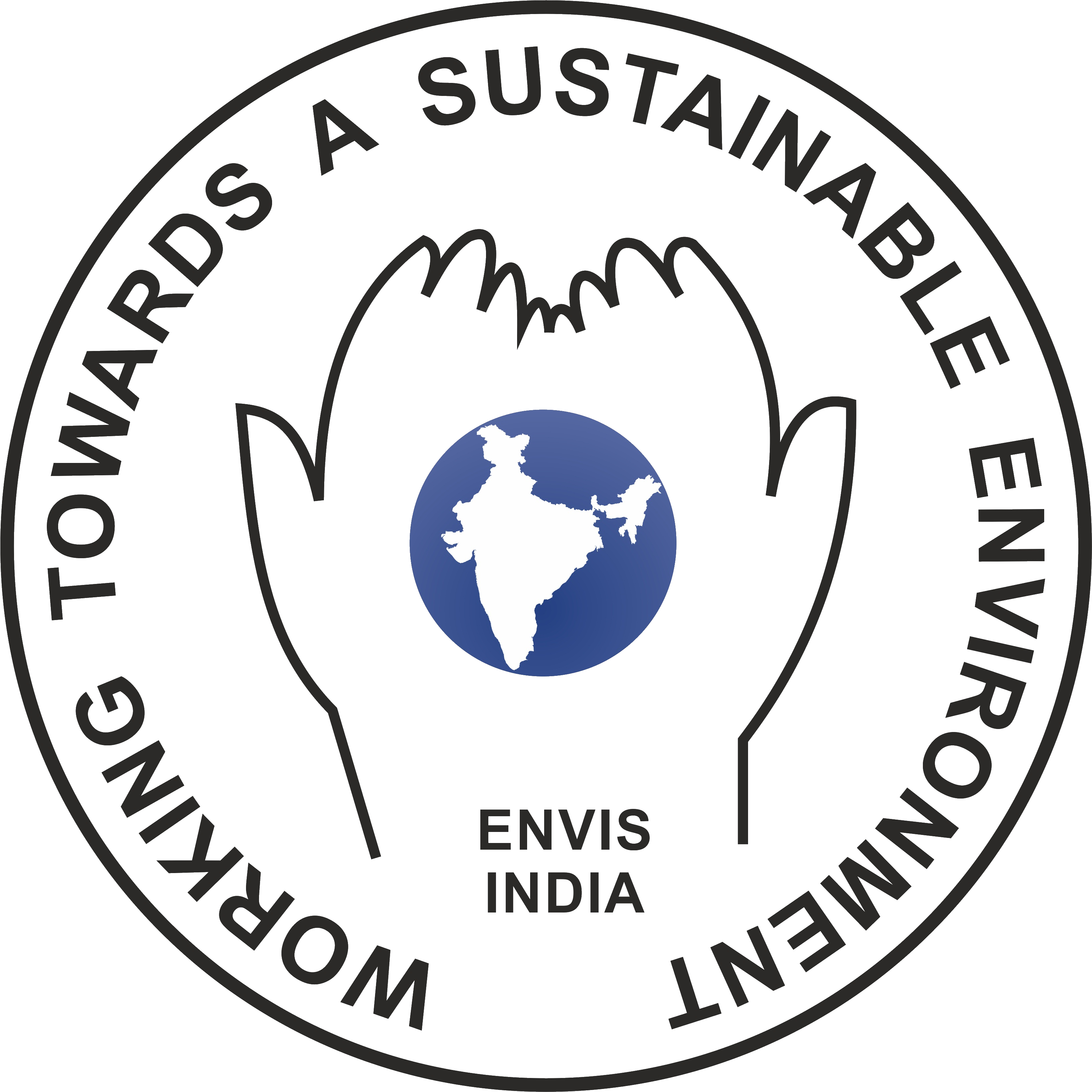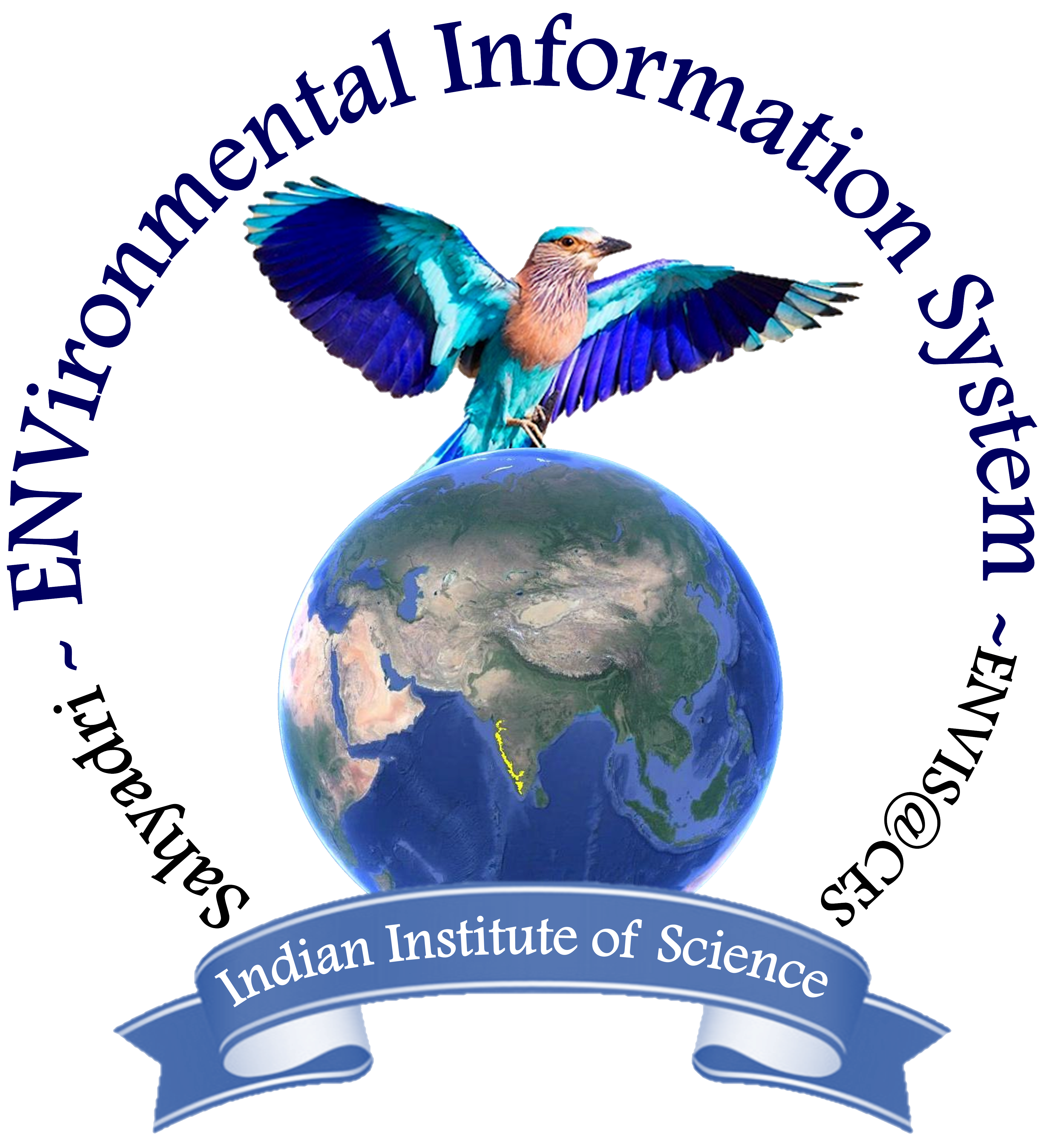Bibliography 1. Carabella, C., Cinosi, J., Piattelli, V., Burrato, P. and Miccadei, E., 2022. Earthquake-induced landslides susceptibility evaluation: A case study from the Abruzzo region (Central Italy). Catena, 208, p.105729.2. Han, Y., Wang, P., Zheng, Y., Yasir, M., Xu, C., Nazir, S., Hossain, M.S., Ullah, S. and Khan, S., 2022. Extraction of Landslide Information Based on Object-Oriented Approach and Cause Analysis in Shuicheng, China. Remote Sensing, 14(3), p.502. 3. Hegde, M., Patel, K. and Diduck, A.P., 2022. Environmental clearance conditions in impact assessment in India: moving beyond greenwash. Impact Assessment and Project Appraisal, pp.1-14. 4. Khamkar, D., Aher, S., Gawali, P. and Mhaske, S., 2022. Investigating probable causes for predicting catastrophic landslides along NH-60 excavated through semi-arid basaltic terrain of Chandanapuri Ghat, Maharashtra, India. Environment, Development and Sustainability, 24(2), pp.2362-2386. 5. Modugno, S., Johnson, S.C.M., Borrelli, P., Alam, E., Bezak, N. and Balzter, H., 2022. Analysis of human exposure to landslides with a GIS multiscale approach. Natural Hazards , pp.1-26. 6. Rana, H. and Babu, G.L., 2022. Object-Oriented Approach for Landslide Mapping Using Wavelet Transform Coupled with Machine Learning: A Case Study of Western Ghats, India. Indian Geotechnical Journal, pp.1-16. 7. Roy, P., Martha, T.R., Khanna, K., Jain, N. and Kumar, K.V., 2022. Time and path prediction of landslides using InSAR and flow model. Remote Sensing of Environment, 271, p.112899. 8. Sumalatha, J., 2022. Stability Analysis of Slopes at a Landslide Prone Area: A Case Study on the Landslide at Madikere, India. In Stability of Slopes and Underground Excavations (pp. 105-114). Springer, Singapore. 9. Sinthuja, U., Thavamani, S., Makkar, S., Gobinath, R. and Gayathiri, E., 2022. IoT applications in landslide prediction and abatement—Trends, opportunities, and challenges. In Computers in Earth and Environmental Sciences (pp. 319-325). Elsevier. 10. Abraham, M.T., Satyam, N., Shreyas, N., Pradhan, B., Segoni, S., Abdul Maulud, K.N. and Alamri, A.M., 2021. Forecasting landslides using SIGMA model: a case study from Idukki, India. Geomatics, Natural Hazards and Risk, 12(1), pp.540-559. 11. Basharat, M., Riaz, M.T., Jan, M.Q., Xu, C. and Riaz, S., 2021. A review of landslides related to the 2005 Kashmir Earthquake: implication and future challenges. Natural Hazards, 108(1), pp.1-30. 12. Bharath, S. and Ramachandra, T.V., 2021. Modeling Landscape Dynamics of Policy Interventions in Karnataka State, India. Journal of Geovisualization and Spatial Analysis, 5(2), pp.1-23. 13. Jain, N., Martha, T.R., Khanna, K., Roy, P. and Kumar, K.V., 2021. Major landslides in Kerala, India, during 2018–2020 period: an analysis using rainfall data and debris flow model. Landslides, 18(11), pp.3629-3645. 14. Ma, Z., Mei, G. and Piccialli, F., 2021. Machine learning for landslides prevention: a survey. Neural Computing and Applications, 33(17), pp.10881-10907. 15. Meena, S.R., Ghorbanzadeh, O., van Westen, C.J., Nachappa, T.G., Blaschke, T., Singh, R.P. and Sarkar, R., 2021. Rapid mapping of landslides in the Western Ghats (India) triggered by 2018 extreme monsoon rainfall using a deep learning approach. Landslides , 18(5), pp.1937-1950. 16. Prakash, N., Manconi, A. and Loew, S., 2021. A new strategy to map landslides with a generalized convolutional neural network. Scientific reports, 11(1), pp.1-15. 17. Prasad, P., Loveson, V.J., Das, S. and Chandra, P., 2021. Artificial intelligence approaches for spatial prediction of landslides in mountainous regions of western India. Environmental Earth Sciences, 80(21), pp.1-20. 18. Putty, M.R.Y., Prithviraj, B.N., Kumar, P.N., Nithish, M.G., Giri, G. and Chandramouli, P.N., 2021. An insight into the hydrological aspects of landslides of 2018 in Kodagu, South India. Landslides, 18(5), pp.1597-1610. 19. Ramachandra, T.V., Bharath, S. and Vinay, S., 2021. Assessment of Forest Transitions and Regions of Conservation Importance in Udupi district, Karnataka. Indian Forester, 147(9), pp.834-847. 20. Ramachandra, T.V. and Bharath, S., 2021. Carbon Footprint of Karnataka: Accounting of Sources and Sinks. In Carbon Footprint Case Studies (pp. 53-92). Springer, Singapore. 21. Yang, D., Qiu, H., Hu, S., Pei, Y., Wang, X., Du, C., Long, Y. and Cao, M., 2021. Influence of successive landslides on topographic changes revealed by multitemporal high-resolution UAS-based DEM. Catena , 202, p.105229. 22. Ramachandra, T.V., Bharath, S. and Bharath, A.H., 2020. Insights of Forest Dynamics for the Regional Ecological Fragility Assessment. Journal of the Indian Society of Remote Sensing, 48(8), pp.1169-1189. 23. Ramachandra, T.V., Vinay, S., Bharath, S., Chandran, M.D.S., and Aithal, B.H., 2020. Insights into riverscape dynamics with the hydrological, ecological, and social dimensions for water sustenance. Curr Sci, 118(9), pp.1379-1393. 24. Chacko, S., Ravichandran, C., Vairavel, S.M. and Mathew, J., 2019. Employing measurers of spatial distribution of carbon storage in Periyar Tiger Reserve, Southern Western Ghats, India. Journal of Geovisualization and Spatial Analysis, 3(1), pp.1-7. 25. Ramachandra, T.V., Bharath, S. and Vinay, S., 2019. Visualisation of impacts due to the proposed developmental projects in the ecologically fragile regions-Kodagu district, Karnataka. Progress in Disaster Science, 3, p.100038. 26. Ramachandra, T.V. and Bharath, S., 2019. Sustainable management of Bannerghatta National Park, India, with the insights in land cover dynamics. FIIB Business Review , 8(2), pp.118-131. 27. Ramachandra, T.V. and Bharath, S., 2019. Global warming mitigation through carbon sequestrations in the Central Western Ghats. Remote Sensing in Earth Systems Sciences, 2(1), pp.39-63. 28. Meena, S.R., Ghorbanzadeh, O., van Westen, C.J., Nachappa, T.G., Blaschke, T., Singh, R.P. and Sarkar, R., 2021. Rapid mapping of landslides in the Western Ghats (India) triggered by 2018 extreme monsoon rainfall using a deep learning approach. Landslides , 18(5), pp.1937-1950. 29. Ramachandra, T.V., Bharath, S. and Gupta, N., 2018. Modelling landscape dynamics with LST in protected areas of Western Ghats, Karnataka. Journal of environmental management, 206, pp.1253-1262. 30. Ramachandra, T.V., Bharath, S., Chandran, M.S. and Joshi, N.V., 2018. Salient Ecological Sensitive Regions of Central Western Ghats, India. Earth Systems and Environment , 2(1), pp.15-34. 31. Ramachandra, T.V., Vinay, S., Bharath, S. and Shashishankar, A., 2018. Focus: Ecology and Evolution: Eco-Hydrological Footprint of a River Basin in Western Ghats. The Yale journal of biology and medicine, 91(4), p.431. 32. Ramachandra, T.V., Bharath, S., Vinay, S., Tara, N.M., Subashchandran, M.D. and Joshi, N.V., 2018. Conservation and Sustainable Management of Local Hotspots of Biodiversity. In Geospatial Infrastructure, Applications and Technologies: India Case Studies (pp. 365-383). Springer, Singapore. 33. Ramachandra, T.V. and Bharath, S., 2018. Geoinformatics based Valuation of Forest Landscape Dynamics in Central Western Ghats, India. J Remote Sensing & GIS , 7(227), p.2. 34. Ramachandra, T.V., Bharath, S. and Vinay S., 2018.Geoinformatics based Valuation of Forest Landscape Dynamics in Central Western Ghats, India, Journal of Biodiversity , 9(1-2), pp.25-42. 35. Ramachandra, T.V., Bharath, S., Rajan, K.S. and Chandran, M.D.S., 2017. Modelling the forest transition in Central Western Ghats, India. Spatial Information Research, 25(1), pp.117-130. 36. Vinay, S., Vishnu, D.M., Shrikanth, N., Chandran, M.D.S., Bharath, S., Shashishankar, A. and Ramachandra, T.V., 2017. Landscapes and hydrological regime linkages: case study of Chandiholé, Aghanashini. National Seminar for Research Scholars. Bangalore , India. 37. Bharath, S., Ramachandra, T.V., 2016. Visualization of landscape dynamics in protected areas. In proceedings of 10th Biennial Lake Conference-2016, 28-31 December. 38. Ramachandra, T.V., Bharath, S., Rajan, K.S. and Chandran, M.S., 2016. Stimulus of developmental projects to landscape dynamics in Uttara Kannada, Central Western Ghats. The Egyptian Journal of Remote Sensing and Space Science, 19(2), pp.175-193. 39. Ramachandra, T.V., Bharath, S. and Chandran, S., 2016. Geospatial analysis of forest fragmentation in Uttara Kannada District, India. Forest Ecosystems, 3(1), pp.1-15. 40. Ramachandra, T.V., Vinay, S., Bharath, H.A., Bharath, S., Shashishankar, A., 2016. Landscape Status and Hydrological Regime of Aghanashini River Basin. Proceedings of SWWEM – 2016 – International Conference and Exibition on Best Practices in Sustainable Water, Waste Water and Energy Management, At Bangalore, Volume: 1. 41. Bharath, S., Rajan, K.S. and Ramachandra, T.V., 2016. Geo-visualisation of landscape dynamics in Sirsi and Haliyal forest divisions of Central Western Ghats. Proceedings of National Conference on Challenges of Civil Engineering Innovations (NCCCEI 2016), At Bangalore from 4-5 May; Sri Venkateshwara College of Engineering NH 7, Vidyanagar, Bengaluru International Airport Road, Bangalore, India. 42. Bharath, S., Rajan, K.S. and Ramachandra, T.V., 2014. Status and Future Transition of Rapid Urbanizing Landscape in Central Western Ghats-CA Based Approach. ISPRS Annals of Photogrammetry, Remote Sensing & Spatial Information Sciences , 2(8). 43. Ramachandra, T.V., Bharath, S. and Bharath, A., 2014. Spatio-temporal dynamics along the terrain gradient of diverse landscape. Journal of Environmental Engineering and Landscape Management , 22(1), pp.50-63. 44. Ramachandra, T.V., Chandran, M.D.S., Bharath, S., Rao, G.R. and Vishnu D.M., 2014. Reclamation of Mine Regions at Bisgod: Approaches and Challenges, SahyadriConservation Series 43, ENVIS Technical Report 80, CES, Indian Institute of Science, Bangalore 560012, India 45. Ramachandra, T.V., Asulabha, K.S., Bharath, H.A., Bharath, S., Durga, M.M., Gouri K., Harish, R.B., Sincy, V., Sudarshan, P.B., Vinay, S. 2014. Environment Monitoring in the Neighbourhood , ENVIS Technical Report 77, Environmental Information System, CES, Indian Institute of Science, Bangalore 560012. 46. Ramachandra, T.V., Aithal, B.H., Kumar, U. and Joshi, N.V., 2013. Prediction of shallow landslide prone regions in undulating terrains. Disaster Adv , 6(1), pp.54-64. 47. Vinay, S., Bharath, S., Bharath, H.A., Ramachandra T.V., 2013. Hydrologic Model with Landscape Dynamics for Drought Monitoring, In proceeding of: Joint International Workshop of ISPRS WG VIII/1 and WG IV/4 on Geospatial Data for Disaster and Risk Reduction, Hyderabad, November 21–22. 48. Ramachandra, T.V., Subash Chandran, M.D., Joshi, N.V., Pallav, J., Uttam, K., Aithal, B.H., Prakash, M., Rao, G.R. and Vishnu, M., 2012. Landslide susceptible zone mapping in Uttara Kannada Central Western Ghats. ENVIS Technical Report 28. Energy & Wetlands Research Group, Centre for Ecological Sciences, Indian Institute of Science, Bangalore, 560012. 49. Ramachandra, T.V., Krishnadas G., Bharath, S. and Kumar, U., 2012. Regional bioenergy planning for sustainability in Himachal Pradesh, India. Journal of Energy, Environment & Carbon Credits, 2(1), 13-49. 50. Ramachandra, T.V., Kumar, U., Aithal, B.H., Diwakar, P.G. and Joshi, N.V., 2010, January. Landslide susceptible locations in western ghats: prediction through openmodeller. In Proceedings of the 26th Annual In-House Symposium on Space Science and Technology, ISRO-IISc Space Technology Cell, Indian Institute of Science, Bangalore (pp. 65-74). |

 Sahyadri ENews: I - LXXVII
Sahyadri ENews: I - LXXVII
